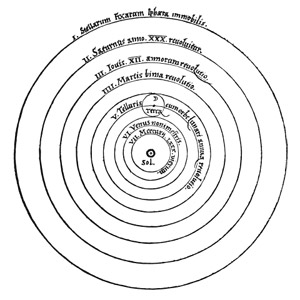
 Nicolaus Copernicus (Mikołaj Kopernik) is one of Poland’s favorite Polish Sons. He is most noted for his Heliocentric Model of our planetary system theorizing that our Sun rather than the Earth was at the center of our solar system.
Nicolaus Copernicus (Mikołaj Kopernik) is one of Poland’s favorite Polish Sons. He is most noted for his Heliocentric Model of our planetary system theorizing that our Sun rather than the Earth was at the center of our solar system.
He was born the 19th of February 1473 in the city of Toruń, and died at age 70 on May 24th 1543 in Frombork, Kingdom of Poland. He studied at universities in both Poland and Italy, and in addition to his works in astronomy he was a non-liturgical canon, mathematician, and physician.
But, what did Copernicus like to eat?
Polish cuisine has had may influences during its history of ever changing borders and political alliances. In the time of Copernicus, a period during the Middle Ages transitioning toward the Renaissance, people of means ate rather well.
Millet was a mainstay of Polish cooking throughout the various regions. Archaeological evidence using carbon dating has pointed to rye, buckwheat, wheat, barley, and especially millet as the predominant grain sources used during the period. Pork and chicken were the most commonly consumed meats followed by beef. Large game was not a big source of meat for most as hunting was reserved for the royals.
As for plant matter a wide variety of vegetables were eaten regularly and usually always cooked, even greens. Root vegetables were a staple as they could be used during the winter. Potatoes were not introduced into Polish cuisine until later in the seventeenth century. Fruits were eaten both raw and cooked. As for beverages, water was of poor quality so beer, mead, and wine were the most common drinks, Polish Wheat Beer was most popular. There were many fine medieval breweries throughout Poland.
Back to millet, millet was prepared in soups, as gruel or porridge as well as fried, and also served as a side dish like rice or fried rice. Rice was expensive and was cherished by the wealthy. Kasza was flavored with mushrooms, fruits, meats and a variety of broths.
In honor of Copernicus’ up coming birthday we have a recipe that could very well have been seen on the table of a Medieval dinner.
Crispy Millet and Scallion Pancakes
Millet Graots – Kasza Jaglana
Cook on medium low heat 15 – 20 minutes
1 cup millet
2 cups water
1 teaspoon salt
1 Tablespoon butter
Fluff millet and spread on a sheet pan to cool.
Millet Batter
2 large eggs
1 teaspoon salt
3 oz butter milk
3 tablesoons flour
6 large scallions sliced
In a bowl whisk buttermilk, eggs, salt, and flour.
Fold in cooled millet and 3/4 of scallions.
Spoon millet batter into heated pan with oil* on medium high heat and press thin.
Cook about 3 -4 minutes per side or until golden brown and crispy. Drain on plate with paper towels, keep warm.
Serve with wild mushroom sauce or a dollop of sour cream.
*Hemp oil, poppy seed oil, and lard were the most likely cooking fats use by our Polish ancestors.
So, on February 19th gather up all the ingredients you need for this special dish along with some Imported Polish Beer for a Medieval Birthday Celebration in honor of Copernicus.

No comments yet.